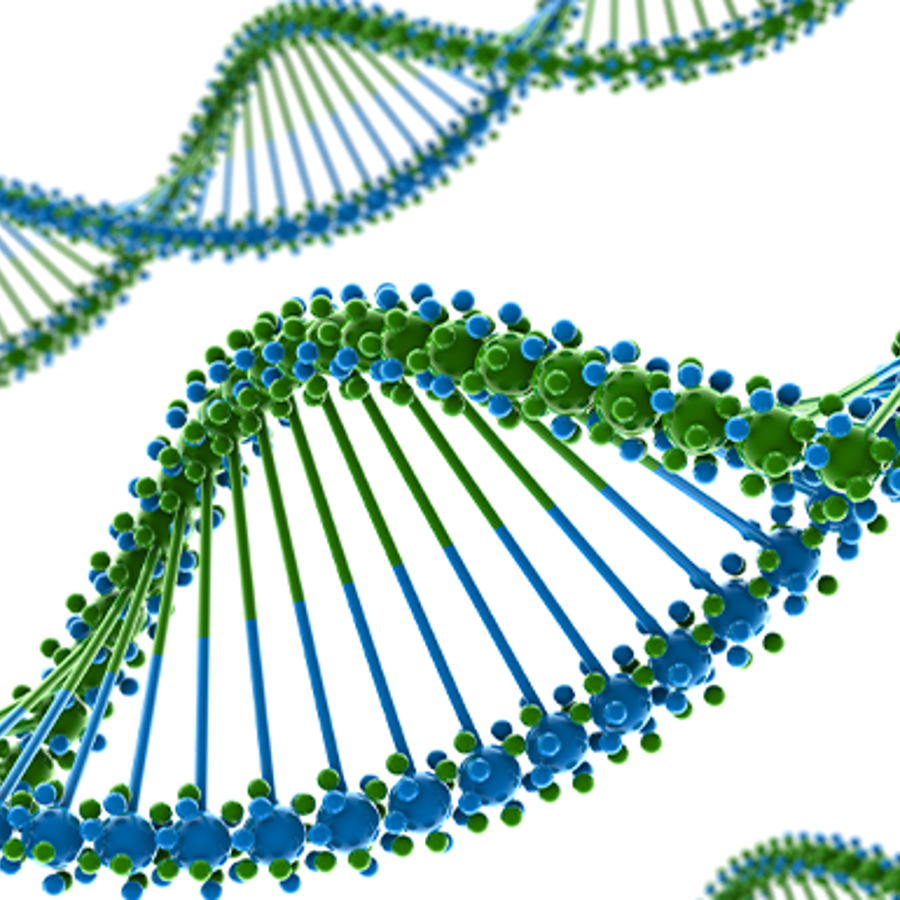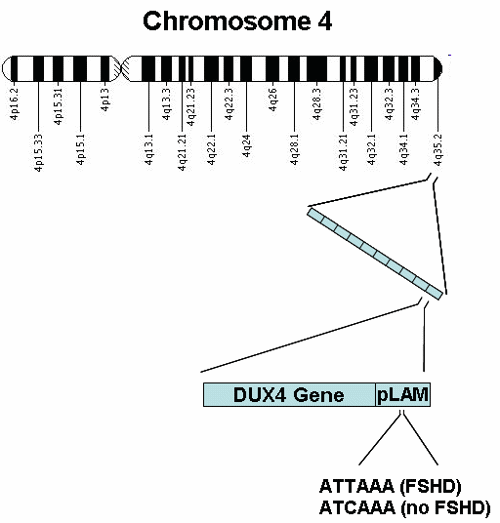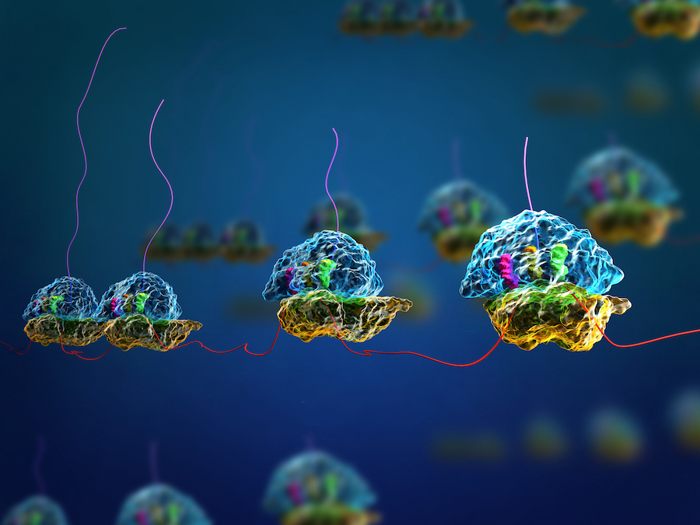
How is it that my uncle has FSHD when no one else in his family does?
April 12, 2012

- Related Topics:
- Genetic conditions,
- Autosomal dominant inheritance,
- Mutation
A high school student from Iowa asks:
"I am doing a school project on FSHD (facioscapulohumeral muscular dystrophy) because my uncle has it and it has really affected him. I was wondering what causes this disease and why it shows only in my uncle and not his sisters. Neither of his parents had FSHD."
At first it might seem weird that your uncle has FSHD even though his parents didn't. After all, this form of muscular dystrophy is a dominant trait. This usually means that to get the disease, one of your parents has to have it first.
But nothing in genetics is so simple. Sometimes a dominant disease like this can suddenly pop up out of nowhere. And this is probably what happened in your uncle's case.
These kinds of things can happen because DNA is not nearly as stable as you might think. It can and does change all the time. The latest studies suggest that we all have around 30-501 new mutations that neither parent had.
Unfortunately for your uncle, one of his changes probably happened in a certain spot on chromosome 4 and caused his disease. And he is not alone.
Around 1/3 of FSHD cases happen when neither parent has the disease. One reason it is so common to end up with FSHD this way is because the part of the DNA affected is really unstable.
In unaffected people, the area involved on chromosome 4 happens to have big blocks of DNA (called D4Z4) that are repeated between 11 and 100 times. These areas are harder for our cells to copy correctly which means they are more likely to make a mistake here. The mistake that usually happens is that copies of the repeat are either gained or lost.
If the number of repeats on this area of chromosome 4 falls to between 1 and 10, then you have a chance at ending up with FSHD. But only a chance.
Some people with this low number of repeats don't get the disease. They lack a certain bit of DNA needed to work in conjunction with the D4Z4 region. You need both to end up with FSHD.
What I'll do for the rest of the answer is talk a bit about what is going on here at the DNA level. As you'll see, losing the repeats actually ends up turning a gene on that is normally off. But only some people have a version of this gene that can then go on to cause problems.

Turning Silent Genes On
For a gene to have an effect, it must be turned on. Most of our genes are on at one point or another in at least some of our cells for at least part of our lives. But this isn't true for every gene.
There are genes that are inactive our whole lives. Often these are old genes that we no longer need. They usually have some sort of damage that keeps them from working anymore.
The gene involved in causing FHSD is one of these genes. It is called DUX4.
DUX4 doesn't work in most people for a couple of reasons. First off, it is buried in that big chunk of repeated DNA I talked about earlier. In fact, there is a copy of DUX4 in every repeat. So people with the usual 11-100 copies of this repeat also have between 11 and 100 copies of the DUX4 gene too.
When you have big chunks of repeated DNA like this, it often ends up hidden from the cell inside of something called heterochromatin. Genes in heterochromatin are invisible to a cell’s machinery – it is like the gene isn't even there. This is the case for most people's DUX4 genes.
The situation changes when you get between 1 and 10 repeats though. Now the DNA opens up and DUX4 can be seen and read by a cell. And this is when the trouble can start.

Your uncle probably ended up with 1-10 repeats at some point during development. Maybe his mom's egg or dad's sperm lost some of their repeats. Or it could have happened right after fertilization.
So his DUX4 can now be read. But as I said before, losing repeats and opening the DNA isn't enough. You also need to have a certain bit of DNA next to the last copy of DUX4 to end up with FSHD.
Reading Genes
Reading a gene isn't easy. First a cell has to know which bit of DNA is actually a gene. This ends up being tricky because only around 2% of our DNA is genes.
The cell then needs to make a copy of that gene. It copies the DNA of the gene into something called mRNA.
This copy needs to hang around long enough to make it out of the nucleus and to something called a ribosome. There it is translated into something useful.
Everyone's cells do a pretty good job of finding the DUX4 gene once most of the camouflaging repeats are lost. But only some people have cells where the copy of the DUX4 gene sticks around long enough to cause FSHD.
These folks have a certain version of pLAM, a DNA region right next to the last DUX4 gene. People who can get FSHD have an ATTAAA in this region while people who can't have an ATCAAA. This one letter is the difference between getting and not getting FSHD once your repeats fall between 1 and 10.

What this bit of DNA does is tell a cell, "Here is the end of a gene… add a bunch of A's to the end of the gene's mRNA." This polyadenylation ("many A’s") signal is what keeps the mRNA around long enough to be translated at the ribosome.
So a couple of things needed to happen for your uncle to end up with FSHD. First off, he needed to lose some or most of his repeats that have the DUX4 gene. Second, he needed to have ATTAAA instead of ATCAAA in the nearby pLAM region on his chromosome 4. Since he is affected by FSHD and neither of his parents nor siblings are, this is the most likely explanation.

Author: Dr. D. Barry Starr
Barry served as The Tech Geneticist from 2002-2018. He founded Ask-a-Geneticist, answered thousands of questions submitted by people from all around the world, and oversaw and edited all articles published during his tenure. AAG is part of the Stanford at The Tech program, which brings Stanford scientists to The Tech to answer questions for this site, as well as to run science activities with visitors at The Tech Interactive in downtown San Jose.
 Skip Navigation
Skip Navigation
